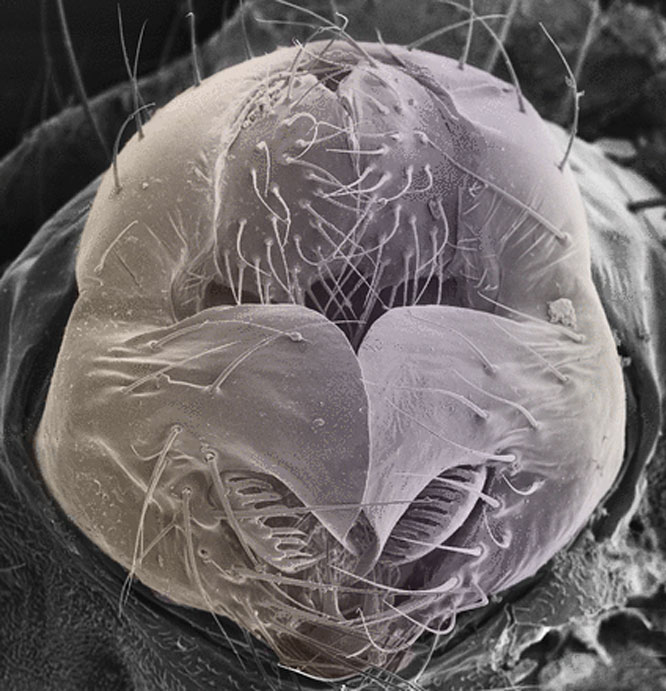The May issue of GENETICS is out now! Check out the highlights below or the full Table of Contents here.
Efficient multiple-trait association and estimation of genetic correlation using the matrix-variate linear mixed model, pp. 59–68
Nicholas A. Furlotte and Eleazar Eskin
Existing approaches to multiple-trait association mapping are computationally intractable for large sample sizes, limiting their practical utility. Furlotte and Eskin introduce a mathematical and computational construct that overcomes these limitations and enables for the first time the large-scale analysis of associations between genetic variants and multiple correlated traits.
Traffic lines: new tools for genetic analysis in Arabidopsis thaliana, pp. 35–45
Gang Wu, Gabrielle Rossidivito, Tieqiang Hu, Yosef Berlyand, and R. Scott Poethig
Wu et al. describe an Arabidopsis resource that significantly decreases the effort and cost of genotyping segregating families. A traffic line (TL) is a chromosome segment marked with a pair of seed-specific transgenes encoding eGFP and dsRED. Seed fluorescence reveals recombination in the intervening region, allowing such events to be avoided or selected. TL can be used to follow the transmission of a chromosome segment carried in trans to the marked chromosome, or to introgress a chromosome segment from one genetic background into another.
Glucose induces sensitivity to oxygen deprivation and modulates insulin/IGF-1 signaling and lipid biosynthesis in Caenorhabditis elegans, pp. 167–184
Anastacia M. Garcia, Mary L. Ladage, Dennis R. Dumesnil, Khadiza Zaman, Vladimir Shulaev, Rajeev K. Azad, and Pamela A. Padilla
Individuals with obesity and type-2 diabetes have compromised oxygen delivery, but how hyperglycemia affects oxygen deprivation responses is not understood. Using C. elegans, Garcia et al. found that a glucose-supplemented diet negatively affects anoxia responses, and survival is modulated by the insulin-like signaling pathway through fatty acid and ceramide synthesis. Glucose affected expression of many genes involved with lipid and carbohydrate metabolism and stress responses. Several of these differentially regulated genes have human homologs associated with diabetes.
Soft shoulders ahead: spurious signatures of soft and partial selective sweeps result from linked hard sweeps, pp. 267–284
Daniel R. Schrider, Fábio K. Mendes, Matthew W. Hahn, and Andrew D. Kern
Does natural selection act primarily on de novo mutations through “hard sweeps” or on previously neutral standing variation via “soft sweeps”? Schrider et al. describe a previously unappreciated effect: regions flanking sites of hard sweeps often closely resemble what is expected near soft sweeps, as well as “partial sweeps” in which the adaptive mutation has not reached fixation. Any test seeking to detect the loci or modes of recent adaptive events may therefore yield spurious results unless it is robust to this “soft shoulder” effect.
Interplay between histone H3 lysine 56 deacetylation and chromatin modifiers in response to DNA damage, pp. 185–205
Antoine Simoneau, Neda Delgoshaie, Ivana Celic, Junbiao Dai, Nebiyu Abshiru, Santiago Costantino, Pierre Thibault, Jef D. Boeke, Alain Verreault, and Hugo Wurtele
In Saccharomyces cerevisiae, histone H3 lysine 56 acetylation (H3K56Ac) is present in newly synthesized histones during DNA replication. Cells lacking the sirtuins Hst3 and Hst4 cannot dea- cetylate H3K56Ac after DNA replication, causing severe but poorly understood phenotypes. Simoneau et al. show that hst3Δ hst4Δ mutants cannot complete DNA replication and accumulate marks of DNA damage and checkpoint activation after exposure to geno- toxins, and that these phenotypes are rescued by abolishing histone H3K79 methylation or H4K16 acetylation. These and other results indicate that persistent activation of DNA damage response kinases is deleterious to cells with constitutive H3K56ac.
Dominance genetic variance for traits under directional selection in Drosophila serrata, pp. 371–384
Jacqueline L. Sztepanacz and Mark W. Blows
Genetic variance in quantitative traits can be partitioned into additive, dominance, and interaction effects. Most attention has been devoted to additive variance, the main determinant of response to selection. Although dominance variance is pervasive, it has received considerably less attention. Theory predicts that directional selection will erode additive variance, resulting in a larger contribution of dominance variance. Sztepanacz and Blows used a multigenerational breeding design in Drosophila serrata to show that fitness itself matches this prediction, but for morphological traits there was no relationship between directional selection and dominance variance.
Examining phylogenetic relationships among gibbon genera using whole genome sequence data using an approximate bayesian computation approach, pp. 295–308
Krishna R. Veeramah, August E. Woerner, Laurel Johnstone, Ivo Gut, Marta Gut, Tomas Marques-Bonet, Lucia Carbone, Jeff D. Wall, and Michael F. Hammer
Gibbons are divided into four genera based on differences in chromosome number. Previous phylogenetic analyses have been inconclusive, yielding a large number of possible bifurcating relationships between genera. Veeramah et al. combined whole genome sequencing data with a coalescent-based Approximate Bayesian Computation method and demonstrate that no single bifurcating topology exists for gibbons. Instead, all four genera likely diverged around the same time, possibly due to biogeographic changes and forest fragmentation in the Sunda shelf approximately five million years ago.
Avoiding the ends: internal epitope tagging of proteins using transposon Tn7, pp. 47–58
Rebecca E. Zordan, Brian J. Beliveau, Jonathan A. Trow, Nancy L. Craig, and Brendan P. Cormack
Some proteins can’t be tagged at their N- or C- termini without disrupting function. Zordan et al. describe a novel transposon Tn7 method for generating saturating libraries of peptide insertions within any ORF, allowing rapid identification of functional internally tagged proteins. The method can be applied without modification to a wide range of model organisms.































